SCHAUMS OUTLINE OF
Bookkeeping and Accounting
SCHAUMS OUTLINE OF
Bookkeeping and Accounting
Fourth EditionJOEL J. LERNER, M.S., P.D.Professor of Business (Retired)
Sullivan County Community CollegeRevised by Rajul Y. Gokarn, Ph.D.Associate Professor of AccountingClark Atlanta UniversitySchaumS Outline Series

Copyright 2007, 1994, 1988, 1987 by The McGraw-Hill Companies, Inc. All rights reserved. Except as permitted under the United States Copyright Act of 1976, no part of this publication may be reproduced or distributed in any form or by any means, or stored in a database or retrieval system, without the prior written permission of the publisher. ISBN: 978-0-07-170249-2 MHID: 0-07-170249-0 The material in this eBook also appears in the print version of this title: ISBN: 978-0-07-163536-3, MHID: 0-07-163536-X.
All trademarks are trademarks of their respective owners. Rather than put a trademark symbol after every occurrence of a trademarked name, we use names in an editorial fashion only, and to the benefit of the trademark owner, with no intention of infringement of the trademark. Where such designations appear in this book, they have been printed with initial caps. McGraw-Hill eBooks are available at special quantity discounts to use as premiums and sales promotions, or for use in corporate training programs. To contact a representative please e-mail us at bulksales@mcgraw-hill.com. (McGraw-Hill) and its licensors reserve all rights in and to the work. (McGraw-Hill) and its licensors reserve all rights in and to the work.
Use of this work is subject to these terms. Except as permitted under the Copyright Act of 1976 and the right to store and retrieve one copy of the work, you may not decompile, disassemble, reverse engineer, reproduce, modify, create derivative works based upon, transmit, distribute, disseminate, sell, publish or sublicense the work or any part of it without McGraw-Hills prior consent. You may use the work for your own noncommercial and personal use; any other use of the work is strictly prohibited. Your right to use the work may be terminated if you fail to comply with these terms. THE WORK IS PROVIDED AS IS. McGRAW-HILL AND ITS LICENSORS MAKE NO GUARANTEES OR WARRANTIES AS TO THE ACCURACY, ADEQUACY OR COMPLETENESS OF OR RESULTS TO BE OBTAINED FROM USING THE WORK, INCLUDING ANY INFORMATION THAT CAN BE ACCESSED THROUGH THE WORK VIA HYPERLINK OR OTHERWISE, AND EXPRESSLY DISCLAIM ANY WARRANTY, EXPRESS OR IMPLIED, INCLUDING BUT NOT LIMITED TO IMPLIED WARRANTIES OF MERCHANTABILITY OR FITNESS FOR A PARTICULAR PURPOSE.
McGraw-Hill and its licensors do not warrant or guarantee that the functions contained in the work will meet your requirements or that its operation will be uninterrupted or error free. Neither McGraw-Hill nor its licensors shall be liable to you or anyone else for any inaccuracy, error or omission, regardless of cause, in the work or for any damages resulting there from. McGraw-Hill has no responsibility for the content of any information accessed through the work. Under no circumstances shall McGraw-Hill and/or its licensors be liable for any indirect, incidental, special, punitive, consequential or similar damages that result from the use of or inability to use the work, even if any of them has been advised of the possibility of such damages. This limitation of liability shall apply to any claim or cause whatsoever whether such claim or cause arises in contract, tort or otherwise.
CONTENTS
PREFACE
This fourth edition brings to the study of bookkeeping and accounting the same solved-problems approach that has proved so successful in the disciplines of engineering, mathematics, and accounting.
In contrast to previous supplementary materials, which have been little more than summary textbooks, this book is organized around the practical application of basic bookkeeping and accounting concepts. This book develops the students ability to understand and solve bookkeeping and accounting problems by providing the following: 1. Concise definitions and explanations, in easily understood terms 2. Fully worked-out solutions to a large range of problems (against which students can check their own solutions) 3. Review questions 4. Sample examinations typical of those used by high schools and 2- and 4-year colleges 5.
Comprehensive Review Problems in each subject category An added feature of this edition is a chapter on Peachtree Complete accounting and bookkeeping software. Joel J. Lerner SCHAUMS OUTLINE OF
THEORY AND PROBLEMS OF
BOOKKEEPING AND ACCOUNTING
PART I
The Bookkeeping Cycle
CHAPTER 1
Assets, Liabilities, and Capital
1.1 NATURE OF BOOKKEEPING AND ACCOUNTING
An understanding of the principles of bookkeeping and accounting is essential for anyone who is interested in a successful career in business. The purpose of bookkeeping and accounting is to provide information concerning the financial affairs of a business. This information is needed by owners, managers, creditors, and governmental agencies. An individual who earns a living by recording the financial activities of a business is known as a
bookkeeper, while the process of classifying and summarizing business transactions and interpreting their effects is accomplished by the
accountant. The bookkeeper is concerned with techniques involving the recording of transactions, and the accountants objective is the use of data for interpretation.
Bookkeeping and accounting techniques will both be discussed.
1.2 BASIC ELEMENTS OF FINANCIAL POSITION: THE ACCOUNTING EQUATION
The financial condition or position of a business enterprise is represented by the relationship of assets to liabilities and owners equity, also known as capital.
Assets: are a business enterprises economic resources, formally defined as probable economic benefits obtained or controlled by a particular entity as a result of post transactions or events. These include properties that are owned and have monetary value such as cash, inventory, land, building equipment, etc.
Liabilities: are the economic obligations of a company. Liabilities are formally defined as probable future sacrifices of economic benefits arising from present obligations of a particular entity to transfer assets or provide services to other entities in the future as a result of past transactions or events.
Liabilities include amounts owed to outsiders such as notes payable, accounts payable, bonds payable, mortgage payable, etc. Owners Equity: in a business enterprise is called the residual interest in the assets of an entity that remains after deducting its liabilities. It is also known as capital and includes owners interest in the business enterprise. These three basic elements are connected by a fundamental relationship called the accounting equation. This equation expresses the equality of the assets on one side with the claims of the creditors and owners on the other side:  According to the accounting equation, a firm is assumed to possess its assets subject to the rights of the creditors and owners.
According to the accounting equation, a firm is assumed to possess its assets subject to the rights of the creditors and owners.
Next page

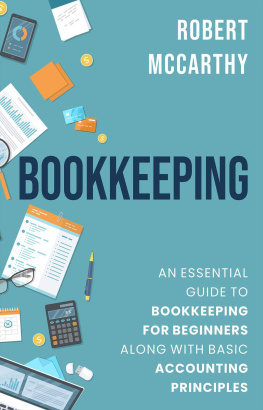
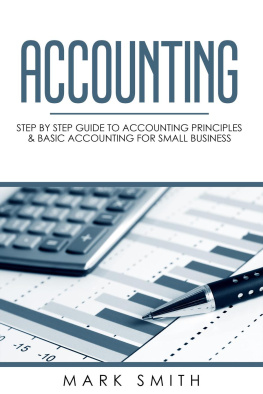
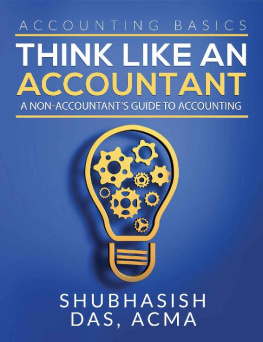
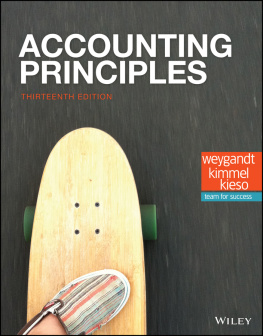
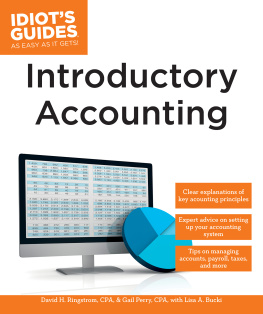
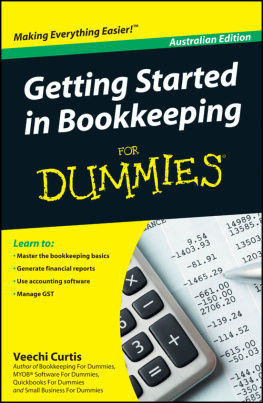
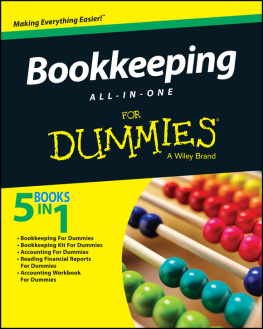
![Jane E. Kelly - Bookkeeping and Accounting All-in-One For Dummies [UK edition]](/uploads/posts/book/80164/thumbs/jane-e-kelly-bookkeeping-and-accounting.jpg)


 Copyright 2007, 1994, 1988, 1987 by The McGraw-Hill Companies, Inc. All rights reserved. Except as permitted under the United States Copyright Act of 1976, no part of this publication may be reproduced or distributed in any form or by any means, or stored in a database or retrieval system, without the prior written permission of the publisher. ISBN: 978-0-07-170249-2 MHID: 0-07-170249-0 The material in this eBook also appears in the print version of this title: ISBN: 978-0-07-163536-3, MHID: 0-07-163536-X.
Copyright 2007, 1994, 1988, 1987 by The McGraw-Hill Companies, Inc. All rights reserved. Except as permitted under the United States Copyright Act of 1976, no part of this publication may be reproduced or distributed in any form or by any means, or stored in a database or retrieval system, without the prior written permission of the publisher. ISBN: 978-0-07-170249-2 MHID: 0-07-170249-0 The material in this eBook also appears in the print version of this title: ISBN: 978-0-07-163536-3, MHID: 0-07-163536-X.  According to the accounting equation, a firm is assumed to possess its assets subject to the rights of the creditors and owners.
According to the accounting equation, a firm is assumed to possess its assets subject to the rights of the creditors and owners.